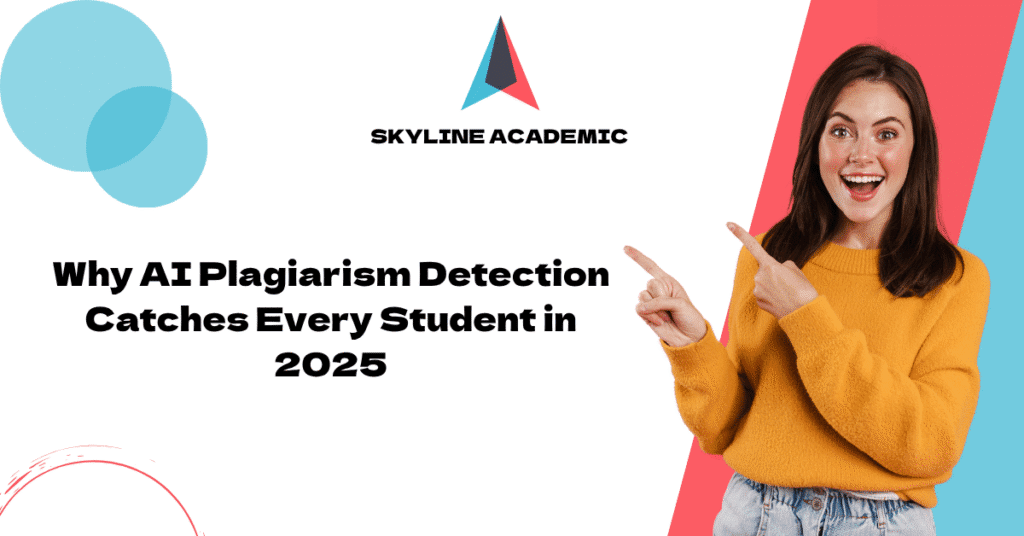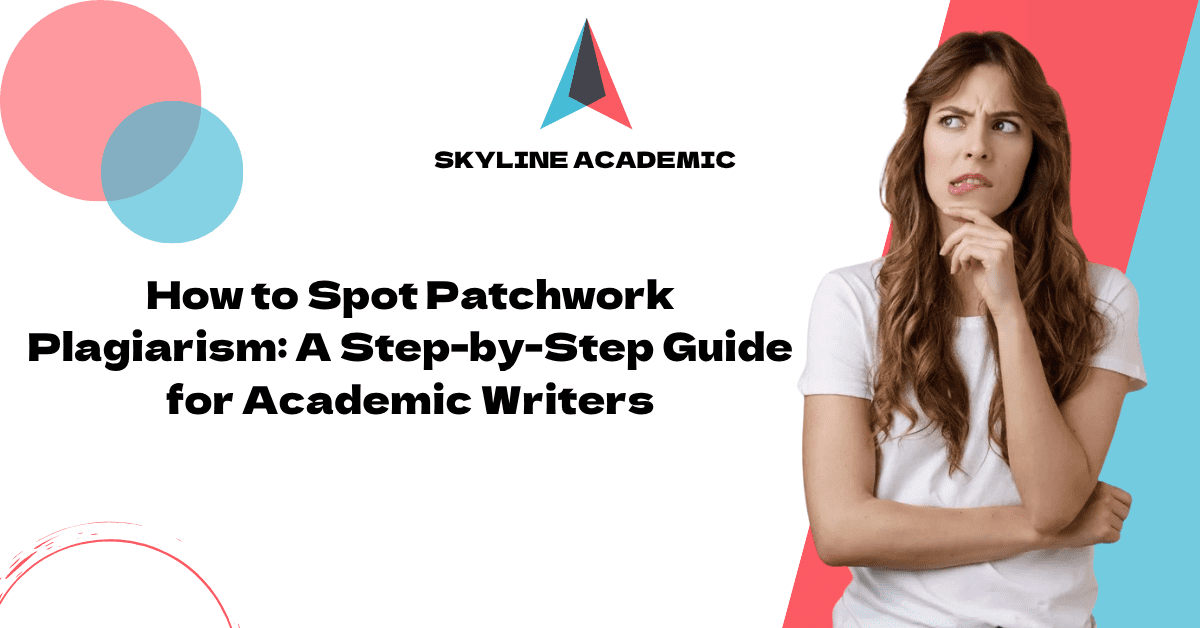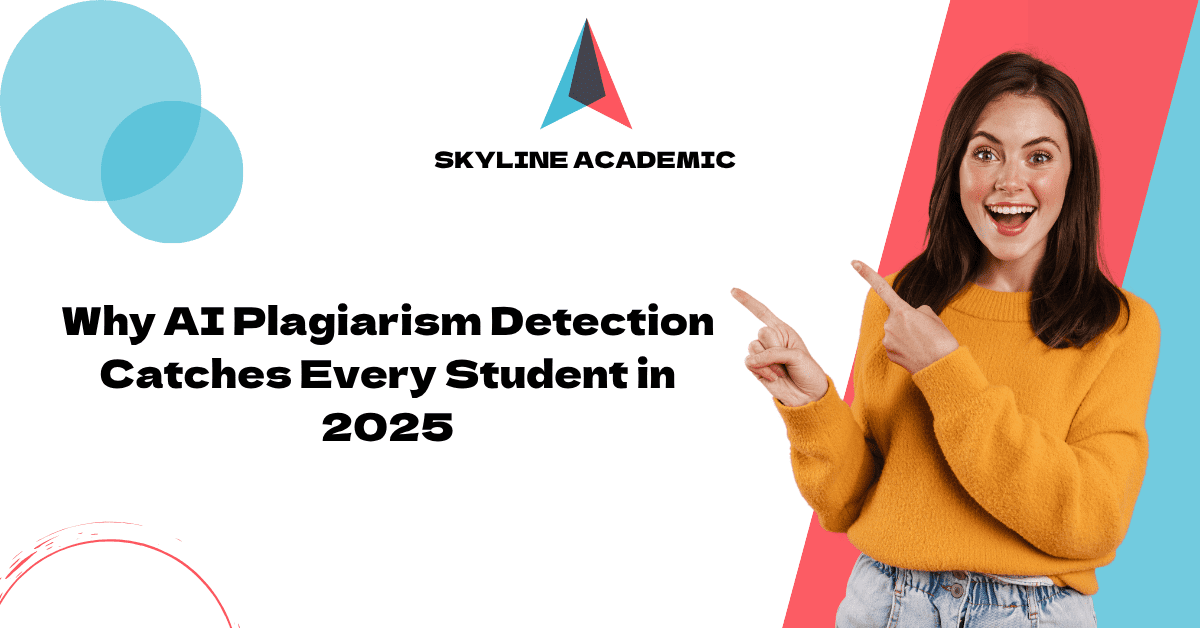Why AI Plagiarism Detection Catches Every Student in 2025
The numbers are startling – 89% of students admit they use AI tools like ChatGPT to do their homework . Teachers have noticed too, with 63% reporting students for using AI on schoolwork in the 2023-24 year, up from 48% last year .
Schools and universities are fighting back with AI plagiarism detection tools. These tools have become essential for teachers, with 68% now using them to curb cheating – a 30% jump in usage . This rise in detection creates new challenges for students. Turnitin, now accessible to more people than ever, provides its software to over 16,000 institutions serving more than 71 million students . The California State University system spent $1.1 million on these tools in 2025 . These numbers show how seriously institutions take AI plagiarism, but they also raise questions about these detection systems’ accuracy and fairness. In this piece, you’ll learn why AI detection tools might flag your work incorrectly and what you can do about it.
Why AI plagiarism detection flags everyone
AI plagiarism detection tools flag everyone—even honest students. These systems don’t deal very well with telling the difference between AI-generated and human-written content. This creates problems for both students and educators.
False positives from AI detectors
AI detectors sometimes wrongly label human-written text as AI-generated. Turnitin states its AI checker has less than a 1% false positive rate [1]. A Washington Post study tells a different story with a rate of 50% [2]. Students wrongfully accused of misconduct face serious consequences because of this gap.
Neurodivergent students and non-native English speakers face higher risks of false positives. The system flags them more often because they tend to use repeated phrases, terms, and words [2]. This bias raises ethical questions about these tools’ assessment of different writing styles.
Similarity scores vs actual plagiarism
These tools often give misleading plagiarism percentages. Matching content shows up in similarity scores but doesn’t always mean misconduct. Originality.ai boasts 99.5% accuracy on global plagiarism detection [3]. These numbers can trick users.
Turnitin knows this limitation. The company says it “provides data for educators to make an informed decision” rather than determining misconduct [1]. Turnitin doesn’t even give an AI detection score between 1-19% [3]. This shows they know their system isn’t perfect.
How AI-generated writing overlaps with human writing
AI and human writing have become harder to tell apart. A survey shows people could only spot half of all AI-generated texts [4]. Humans correctly identified AI texts just 57% of the time [4]. Professional AI writing fooled even more people—less than 20% could spot it [4].
Both humans and AI use similar language patterns, which causes this overlap. Research shows AI writing has subtle giveaways. AI uses present participial clauses 2-5 times more than humans. Words like “camaraderie” appear about 150 times more often in AI text [5].
Skyline Academic’s artificial intelligence plagiarism detection tools tackle these issues through better contextual analysis. Their system offers more detailed assessments than competitors. It considers different writing styles and reduces false positives while staying accurate.
The student experience: stress, confusion, and fear

Image Source: Turnitin Educator Network – Forumbee
Students accused of using AI for their work find themselves caught in a technological nightmare. The effects reach beyond academic penalties and create a fearful environment that disrupts their ability to learn.
Misunderstanding similarity reports
Students often get confused about percentages shown in detection tools. Turnitin’s documentation shows that AI detection scores under 20% aren’t reliable enough and now show just an asterisk instead of a number [6]. Students don’t understand that AI indicators work separately from similarity scores [6]. This misunderstanding makes them panic needlessly at any percentage they see, thinking it means they’ve cheated.
Non-native speakers and bias in detection
AI detectors show troubling bias against students who speak English as a second language. A Stanford study found these systems wrongly identified 61.2% of TOEFL essays as AI-written [7]. The situation gets worse – all seven detectors tested wrongly labeled 19% of human-written TOEFL essays as AI-created [8]. Black students also face unfair treatment, as Common Sense Media reports teachers accuse them of AI plagiarism at higher rates [9].
Using Grammarly or spellcheck and still getting flagged
Basic writing tools now set off false alarms. University of North Georgia student Marley Stevens lost her scholarship and got a zero after she used Grammarly – a tool her university actually recommended – to check her paper [10]. Kelsey Auman almost couldn’t graduate because her “formulaic writing” assignments raised red flags, though she never used AI [11]. The “Rephrase” and “Rewrite” features in Grammarly especially trigger these AI detectors [12].
The emotional toll of false accusations
False accusations crush students mentally. Many stop eating, can’t sleep, and lose focus during investigations [10]. A student wrongly accused of using ChatGPT started having suicidal thoughts after her detector flagged her well-written work [13]. First-generation student Maggie Seabolt felt completely alone when she couldn’t prove she wrote her own work [10]. These experiences create a “guilty until proven innocent” atmosphere [8] that poisons the learning environment.
Skyline Academic’s detection system tackles these problems through advanced contextual analysis. Their approach reduces false positives while staying accurate, especially for non-native speakers and students who use legitimate writing tools.
Faculty challenges and institutional pressure
AI plagiarism debates have placed educators in a difficult position as they face mounting institutional pressures that create major challenges.
Teachers acting as investigators, not educators
Faculty members feel frustrated about their evolving role. One instructor put it well: “I signed up to teach writing, not to conduct plagiarism CSI every week” [14]. This radical alteration turns educators into detectives instead of mentors and changes their student relationships. Schools now must act as “their own investigator, judge, and jury” [15]. This responsibility undermines their main educational purpose.
Increased workload from AI detection tools
AI detection systems create more work despite their time-saving promise. Faculty reported 63% of students for using AI during 2023-24, compared to 48% last year [14]. “The AI detection features cause more headaches than they solve,” one administrator noted [14]. Teachers report higher stress levels and burnout while they enforce these policies without enough support from their institutions [1].
Lack of clear AI usage policies
College presidents have lagged behind in 2024, with 81% yet to release AI usage policies [2]. Clear institutional guidelines helped only 16% of students understand appropriate AI use [2]. The situation looks worse as 20% of provosts say their institutions have AI governance policies [2].
Pressure to adopt tools like Turnitin & Skyline Academic
Detection solutions face growing adoption pressure despite questions about their effectiveness. Tech companies profit from this widespread concern while faculty struggle with these issues [16]. Check out our Skyline Academic resources to learn about AI detection tools and develop clear institutional policies.
Rethinking academic integrity in the AI era
Prevention works better than detection when dealing with artificial intelligence plagiarism in higher education. Educational institutions have started to fundamentally rethink academic integrity rather than just relying on surveillance tools.
Designing assignments that reduce AI misuse
Students find it harder to misuse AI when assignments focus on authentic assessment. Tasks that need personal reflection, unique applications, or multi-stage processes naturally discourage AI plagiarism [17]. Instructors can monitor progress better by breaking larger assignments into stages like proposals, outlines and drafts [18]. Students who receive tailored assignments find it difficult to generate appropriate AI responses [18].
Teaching citation and ethical AI use
Research shows 51% of students use AI tools even when they’re not allowed [17]. Teaching proper AI citation is a vital step forward. Students need to write paragraphs that explain their AI tool usage, describe how these tools helped, and show how they made the work original [19]. This open approach promotes responsible AI use and maintains academic integrity.
Creating transparent AI policies
Clear institutional guidelines help students understand appropriate AI use, yet only 16% of institutions provide them [3]. Explore Skyline Academic’s comprehensive resources to help design AI-resistant assignments and create transparent AI policies for your institution. Good policies should encourage AI use to improve teaching while ensuring ethical tool usage [20].
Building trust instead of surveillance
Traditional surveillance creates unnecessary stress for faculty and students alike [3]. Transparency helps institutions build trust with their students. This transformation prioritizes growth over results. It focuses on learning-centered assessments and views AI as a potential “co-pilot” when properly credited [14].
Conclusion
AI tools are becoming a regular part of academic life, and the problems with artificial intelligence plagiarism will surely grow. Current detection systems still show error rates reaching 50% despite vendors claiming near-perfect results. These systems unfairly target non-native English speakers and neurodivergent students, which creates an unfair learning environment.
Similarity scores don’t tell the whole story about misconduct. Detection tools can’t keep up with the thin line between AI and human writing. This has created a tech race that puts students in a difficult position. Understanding these systems is vital to guide your academic experience.
Teachers now find themselves acting more like investigators without proper guidelines from their institutions. This fundamental change affects how students and teachers interact and adds stress for everyone. Schools should move away from just watching students. They need to prevent issues by creating better assignments and clear rules about AI use.
Skyline Academic differs from other detection tools because of its smart context analysis system. Their technology handles different writing styles better than competitors. This reduces wrong detections by a lot while staying accurate for all students, including those who speak English as a second language. They also provide detailed resources to help schools create clear AI policies and design assignments that work well with AI.
Trust between students and teachers matters more than perfect detection for academic honesty. Students need tools that help them learn instead of making them afraid. You can direct your way through this changing digital world with confidence. Just understand proper citations, use AI ethically, and work with fair systems like Skyline Academic to protect your academic integrity.
FAQs
Q1. How accurate are AI plagiarism detection tools in 2025?
While AI plagiarism detection tools have improved, they are not infallible. Studies show error rates can reach up to 50%, despite vendor claims of near-perfect accuracy. These tools may struggle with advanced AI writing or well-written human content, leading to false positives.
Q2. What percentage of AI-detected content is considered plagiarism?
There is no fixed percentage that automatically indicates plagiarism. Most detection tools don’t attribute scores for AI detection below 20% to avoid false positives. The context and institution’s policies play a crucial role in determining whether AI-detected content constitutes academic misconduct.
Q3. How are non-native English speakers affected by AI detection tools?
Non-native English speakers face a higher risk of false positives from AI detection tools. Studies have shown these systems disproportionately flag essays written by non-native speakers as AI-generated, raising concerns about bias and fairness in academic integrity processes.
Q4. What challenges do faculty members face with AI plagiarism detection?
Educators are increasingly burdened with investigating potential AI use, shifting their role from teaching to policing. Many report increased stress and workload from enforcing AI policies, often without clear institutional guidelines or adequate support for navigating these new technologies.
Q5. How can institutions rethink academic integrity in the AI era?
Institutions can focus on prevention rather than detection by designing AI-resistant assignments, teaching proper AI citation, creating transparent policies, and fostering trust. Emphasizing learning outcomes over surveillance and recognizing AI as a potential tool when properly attributed can help maintain academic integrity while adapting to technological changes.
References
[1] – https://www.enago.com/academy/the-missing-link-in-ai-policy-enforcement-for-universities/amp/
[2] – https://www.insidehighered.com/news/student-success/academic-life/2024/09/16/college-students-uncertain-about-ai-policies
[3] – https://www.trinka.ai/blog/academic-integrity-in-online-learning/amp/
[4] – https://www.sciencedirect.com/science/article/pii/S1477388025000131
[5] – https://www.cmu.edu/dietrich/news/news-stories/2025/february/large-language-models-writing-text.html
[6] – https://guides.turnitin.com/hc/en-us/articles/28457596598925-AI-writing-detection-in-the-classic-report-view
[7] – https://hai.stanford.edu/news/ai-detectors-biased-against-non-native-english-writers
[8] – https://www.sciencedirect.com/science/article/pii/S2666389923001307
[9] – https://citl.news.niu.edu/2024/12/12/ai-detectors-an-ethical-minefield/
[10] – https://www.usatoday.com/story/life/health-wellness/2025/01/22/college-students-ai-allegations-mental-health/77723194007/
[11] – https://spectrumlocalnews.com/nys/central-ny/news/2025/05/14/ub-student-says-false-ai-use-accusation-caused-stress–inspired-petition
[12] – https://originality.ai/blog/grammarly-use-trigger-ai-detection
[13] – https://www.psychologytoday.com/us/blog/worry-wise/202306/rethinking-the-plagiarism-conversation-in-light-of-chatgpt
[14] – https://packback.co/resources/blog/moving-beyond-plagiarism-and-ai-detection-academic-integrity-in-2025/
[15] – https://soeonline.american.edu/blog/prevent-plagiarism-in-the-classroom/
[16] – https://laist.com/news/education/california-colleges-spend-millions-to-catch-plagiarism-and-ai-is-the-faulty-tech-worth-it
[17] – https://er.educause.edu/articles/sponsored/2023/11/academic-integrity-in-the-age-of-ai
[18] – https://nmu.edu/ctl/creating-ai-resistant-assignments-activities-and-assessments-designing-out
[19] – https://cte.ku.edu/maintaining-academic-integrity-ai-era
[20] – https://elevateconsult.com/insights/developing-an-ai-policy-for-universities-a-comprehensive-guide/



